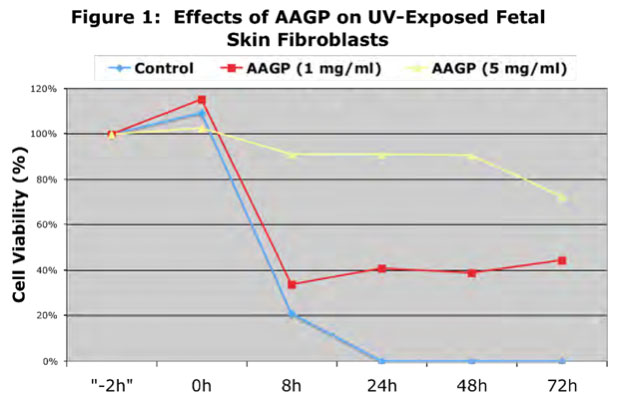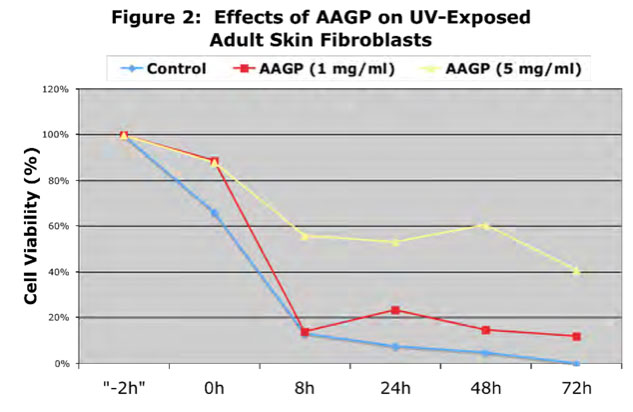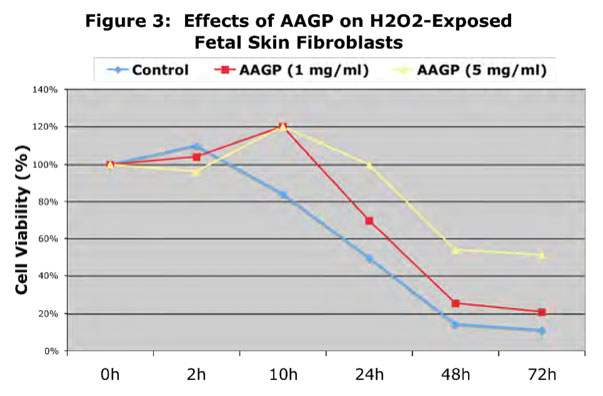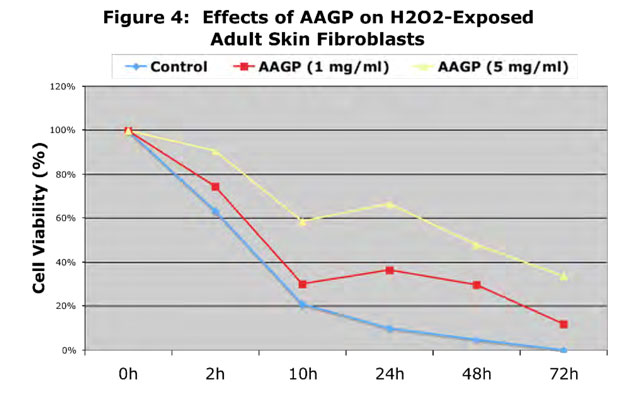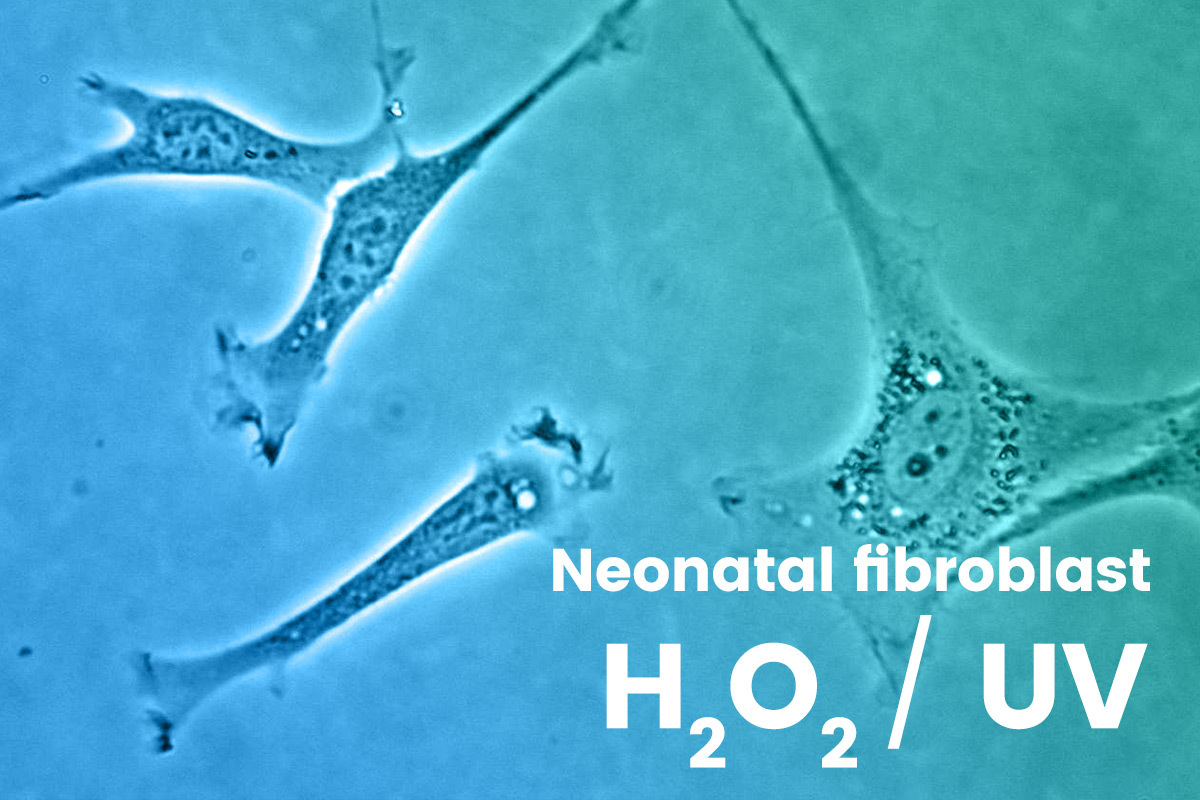Hussein, January 2006
Introduction
Previous results have demonstrated strong preservative effects of AAGP® on skin fibroblasts exposed to H2O2 and UV-C radiation to induce oxidative stress. In those experiments, high concentrations (15mg/ml) of AAGP® were used to get maximal protection of cells. Since these concentrations may be in excess for use in cosmetic products the aim of this investigation was to see if the same protection could be reached using much lower (1 and 5mg/ml) concentrations of AAGP®.
Method
Primary fetal and adult fibroblasts were plated at a concentration of 1×105 cells/ml and grown on non-adherent plates in serum-free media at 37°C with concentrations of 0, 1 or 5mg/ml AAGP®. To test the affects of these low concentrations of AAGP® on oxidative stress the cells were either exposed to 1mM hydrogen peroxide or UVC (256nm) rays for 2 hours. Cell counts were taken at various time points using Trypan blue and two counts were performed per sample to calculate the percentage viability (from 0 hours) of the cell sample.
Results
UV Exposure – In fetal skin cells, after 24 hours of UV exposure control cultures were all dead whereas AAGP® treated cells had around 40% and 90% cell viability at concentrations of 1 and 5 mg/ml, respectively. Cell viability remained somewhat similar (i.e. -40% and 72%) even after 3 days since UV exposure in AAGP® treated samples.
Whilst not as prominent, the AAGP® protection was also seen in the more fragile adult fibroblasts. At 24-post UV exposure only 10% of the control adult fibroblasts remained viable whereas AAGP® treated cells had around 23% and 53% cell viability at concentrations of 1 and 5 mg/ml, respectively. After 3 days, a significant number of AAGP® treated cells survived (about 12% for 1mg/ml and 41% for 5mg/ml) while the controls all died.
Hydrogen Peroxide Exposure – In the fetal fibroblast skin line, 3 days post H2O2-exposure, control cultures were down to 10% whereas AAGP® treated cells remained more resilient with 20% and 50% viability at 1 and 5 mg/ml, respectively.
Similar protective results were found for low concentrations of AAGP® on the adult human fibroblasts. After 3 days, H2O2- exposed control cultures were all dead whereas AAGP® treated cells were at 12% and 34% viability at 1 and 5 mg/ml, respectively.
